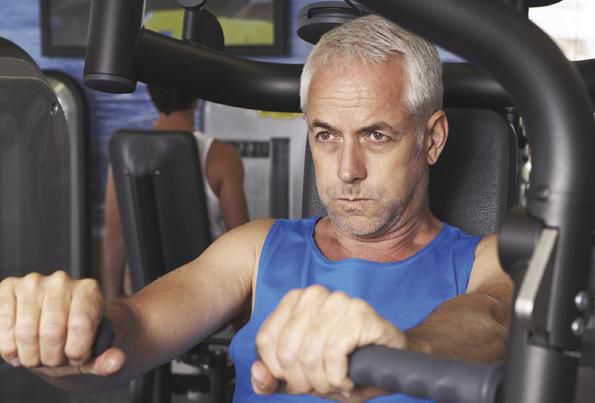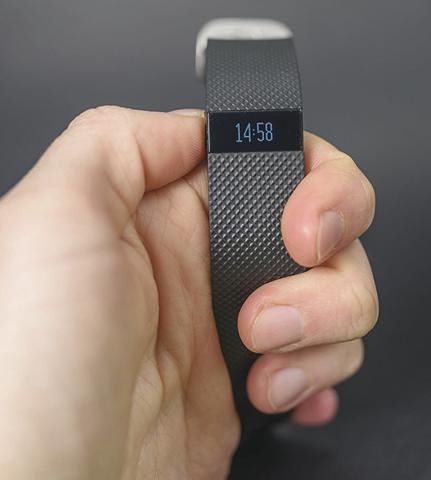Exercise: Can you trust the latest buzz?

Sarah Cervantes - unsplash.com.
What’s the latest word on the street about when, why, and how to exercise? Here’s what you may have heard...and what the best research says about it.
Fast First?
“There’s actually a lot of research that supports skipping eating before exercise to maximize your fatburning potential,” claims FitDay.com.
True...as far as it goes. Which isn’t very.
In small studies in active young men and women, those who did moderate-intensity aerobic exercise before breakfast—that is, while fasting—burned more fat while they exercised than they did on days they exercised after breakfast.1
But that doesn’t mean they had burned more fat by the next morning.
“You have to look at fat burning on a 24-hour basis, or over the course of a week or longer,” says Brad Schoenfeld, an assistant professor of exercise science who heads the human performance laboratory at Lehman College in New York.
Only a few studies have done that. For example, when 16 overweight or obese young women ate a 440- calorie meal either before or after a 25-minute high-intensity interval cycling session three times a week, both groups lost the same amount of body fat—roughly a pound—after six weeks.2
And in a study by Schoenfeld, 20 young women on a lower-calorie diet lost the same amount of body fat after four weeks, regardless of whether they drank a 250-calorie shake before or after they ran on a treadmill for an hour three times a week.3
His bottom line: “If you fast before exercise, you don’t seem to burn more fat over time. It’s the number of calories you burn that determines how much fat you lose over time.”
Advice to exercise before you eat is “an overhyped strategy,” says Schoenfeld. The best time to exercise is the time that works best for you—before or after.

Exercise before or after eating? Over the long term, it may not matter.
“The most important factor with exercise is adherence,” notes Schoenfeld. “If people think they have to do their workout while fasted but they hate it, they may just quit exercising.”
1Sports Med. 2016. Doi:10.1007/s40279-016-0594-x.
3J. Int. Soc. Sports Nutr. 2014. Doi:10.1186/s12970- 014-0054-7.
Brain Gain?
Can exercise keep your noggin in tip-top shape as you age? People who report being more physically active are less likely to develop memory loss than those who say they’re sedentary.1
“They are about 20 percent less likely to be diagnosed with dementia, and their cognitive function declines more slowly,” says Maria Fiatarone Singh, a professor of medicine and exercise and sport science at the University of Sydney in Australia.
But when researchers put healthy people on treadmills several days a week for weeks or months to see if they do better than sedentary people on memory and other tests, “there usually isn’t a large effect on cognitive function,” notes Fiatarone Singh. 2
Cue the dumbbells.
A handful of studies suggests that strength training may offer some boost to the brain.
For example, researchers assigned 155 older women with no cognitive problems to do strength training once or twice a week or balancing and toning exercises twice a week.3
After a year, the strength-training groups were faster than the balance and toning group on a test of executive function—the ability to plan, organize, and show other signs of mental flexibility. (One example: the test asked them to name the color of the word “blue,” which was printed in red ink.)
However, the strength trainers did no better on tests of working memory (remembering a list of numbers).
What about people who already have some memory loss?
Fiatarone Singh studied 100 older adults with mild cognitive impairment, or MCI.4 People with MCI are more likely to develop Alzheimer’s or other dementias. The volunteers were assigned to do an hour of strength training or computer-based mental training twice a week, both, or neither.
After six months, the strength trainers did better on a test of Alzheimer’s symptoms—being able to name a flower, pencil, comb, or other object, for example—than those who didn’t lift weights. But they did no better on overall tests of memory, attention, or executive function.

It’s too early to tell if strength training boosts some thinking skills.
And keep in mind that the people in these studies lift heavier and heavier weights as they get stronger.
“The volume and intensity of exercise programs for seniors are usually way too low,” says Fiatarone Singh. “In our studies, those who lifted the most weight had the greatest improvements in cognition.”5
(Before you hit the heavy weights, make sure you’re doing it safely.)
Fiatarone Singh’s bottom line:
"What’s good for the body is also good for the brain. The benefits of exercise don’t stop at the neck.”
1BMC Public Health 14: 510, 2014.
2Psychosom. Med. 72: 239, 2010.
3Arch. Intern. Med. 170: 170, 2010.
4J. Am. Med. Dir. Assoc. 15: 873, 2014.
5. Am. Ger. Soc. 2016. Doi:10.1111/jgs.14542.
Just a Minute?
How low can you go? Martin Gibala is trying to answer that question.
“The number-one cited reason for why people don’t exercise is lack of time,” says the professor and chair of the department of kinesiology at Mc- Master University in Canada.
Gibala’s group is hunting for training regimens with the most bang (cardiovascular fitness) for the buck (your time).
Their latest: the one-minute workout.
“That’s a bit of a teaser headline,” admits Gibala. The workout consists of three 20-second all-out sprints on a stationary bike (that’s the minute) interspersed with bouts of easy cycling.
“The sprint interval workout is 10 minutes, start to finish,” says Gibala. “That includes warm up, bouts of sprinting, recovery in between, and cool down.”
So far, the one-minute workout appears to be, well, working.
In a study of 19 sedentary young men, for example, those who did three one-minute workouts a week were just as aerobically fit after 12 weeks as those who did three 45-minute bouts of moderate cycling a week. And their insulin was just as effective in lowering blood sugar after they were given a high dose of sugar.1
So why would anyone exercise for 45 minutes, when they could get the same aerobic benefit in just 10?
Because one of those 10 minutes has to be the most intense, save-your-child-from-an-onrushing-bus kind of exertion.
“The trade-off for time is intensity,” explains Gibala. “We’re talking a ‘sprint for your life’ kind of effort.”
Many people can’t—or won’t—push themselves that hard, he notes. But, he adds, they might still be able to benefit from interval training.

Try speeding up for a minute or two as you walk, bike, or run.
For example, in one study, Thai researchers assigned 43 older adults with type 2 diabetes to a sedentary control group or to one of two exercise groups.2 Both exercise groups walked three times a week for 30 to 40 minutes. But the steady exercise group walked at a constant moderate pace, while the interval exercise group built up—over 6 weeks— to alternating walking fast for 1 minute and moderately for 4 minutes.
After 12 weeks, both walking groups were in better shape than the sedentary controls. They were more aerobically fit, their insulin worked more effectively, they had lost more body fat, and their blood vessels dilated more easily.
But hemoglobin A1c—a long-term measure of blood sugar—improved only in the interval walkers. And they had better aerobic fitness and blood vessel function than the moderate-paced walkers.
“Interval training is also beneficial in people without diabetes,” says Gibala. “If people take an interval approach, it’s probably going to be better than moderate- intensity exercise for the same time commitment.”
(Tip: If your goal is simply to burn calories, it doesn’t matter if you walk or run. Walking a mile takes more time than running a mile, but it eventually burns about the same number of calories.)
“We really want to find the sweet spot between duration and intensity for different groups,” says Gibala. “The more exercise menu options we can give people, the better.”
2Scand. J. Med. Sci. Sports 24: e69, 2014.
Get Up and Move?
“There are about three dozen chronic diseases and conditions associated with excess sitting,” says James Levine, an endocrinologist at the Mayo Clinic.
For example, people who report sitting for the most hours per day have a higher risk of type 2 diabetes, heart attack, and stroke.1

Get up and walk every hour or two.
And their insulin becomes less effective (which may explain their higher diabetes risk).
In one study, “the day after 14 young healthy adults sat for nearly 17 hours, their insulin was roughly 40 percent less effective in lowering their blood sugar than it was after a day with lots of standing and moving about and just six hours of sitting,” says study author Barry Braun, professor and head of the department of health and exercise science at Colorado State University.2
But hitting the gym may not make up for a day at your desk.
For example, on four days when 18 sedentary young adults broke up a 14-hour period of sitting with standing (for 2 hours) and leisurely walking (for 4 hours), their triglycerides were lower—and they needed less insulin to handle a sugar-laden drink—than on the four days when they sat for 14 hours.3
But when they replaced one of the 14 hours of sitting with an hour of vigorous exercise, their insulin and triglycerides were no better than when they sat all day.3
“Think of it this way,” says Levine. “Why would you expect that something you do for 60 minutes a day would offset the harm of something you do for 13 or 14 hours a day?”
Two more reasons not to act like there's glue on the seat of your chair:
■ Artery function. After 12 young men sat without moving their legs for three hours, their blood vessels were less able to respond to increases in blood flow than when they took a 5-minute walk during each of the three hours.4
■ Mood, fatigue, hunger. When 30 adults sat for 6 hours, they reported feeling less energetic later in the day than when they broke up the sitting with either one 30-minute brisk walk or one 5-minute brisk walk every hour. But only when they took the 5-minute hourly walks did they report fewer food cravings before lunch and better mood all day.5
Stuck in an office without a standing or treadmill desk?
"There are many options that don't require fancy equipment," says Levine.
Try walk-and-talk meetings. Or stand and pace when you answer the phone. Or walk to a co-worker's office instead of sending an e-mail. Or take the stairs. Or park at the back of the parking lot.
Your goal, according to an expert panel in Britain: spend half your workday upright or moving around.6
“We want to develop the best catalogue of approaches that individuals and companies can use to get moving,” says Levine, who has worked with several companies that market standing desks and other gadgets that nudge people to move more.
Just make sure you don’t sit around and wait for his results.
2Metab. Clin. Exper. 60: 941, 2011.
4Med. Sci. Sports Exerc. 47: 843, 2015.
5Int. J. Behav. Nutr. Phys. Act. 13: 113, 2016.
6Br. J. Sports Med. 49: 1357, 2015.
Keep Track?
“There’s even more evidence that fitness trackers don’t work,” declared Time.com last October.
Yikes. The news came from a study of 470 overweight or obese young adults who had lost an average of 18 pounds over six months with a mix of dieting and exercise.1
Over the next 18 months, those who were assigned to use a fitness tracker regained more weight (about 10 pounds) than those who didn’t use a tracker (6 pounds). And the fitness tracker group was no more active than the control group, which reported its activity to a website.
Why? The study’s authors aren’t sure.
People using the trackers may have thought, “Oh, I exercised a lot today. Now I can eat more,” lead author John Jakicic, a professor in the department of health and physical activity at the University of Pittsburgh, told National Public Radio last September.
Or, fitness trackers may inspire some people and discourage others. Or maybe a tracker only helps if you’re cutting calories.

Using a fitness tracker? Don’t reward yourself with a pizza
In an earlier study, people who got diet counseling and used a tracker lost more weight than people who just got a weight-loss manual.2 People who got only the tracker or only the counseling did no better than those who got only the manual.
The bottom line: If you use a tracker, don’t toss it yet. Just don’t assume that taking, say, 10,000 steps a day will make the pounds melt away.
And don’t assume that you can celebrate your tracked walks with a chocolate sundae.
2Int. J. Behav. Nutr. Phys. Act. 8: 41, 2011.

